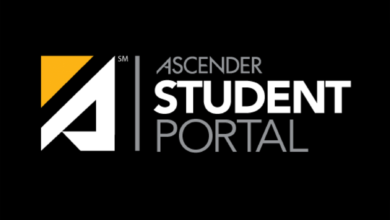What Happened to Josephine Bell? Here’s What We Discovered

The name Josephine Bell has sparked widespread curiosity, particularly due to a series of events and circumstances surrounding her life and career. Whether you’ve heard about her in relation to a high-profile case, a captivating story, or a significant event, one thing is certain: Josephine Bell’s life has drawn attention from all corners of the internet and beyond.
But who is Josephine Bell, and why are so many people asking about her now? What happened to Josephine Bell, and where is she today? In this in-depth article, we will explore the story of Josephine Bell, delve into the most recent discoveries about her, and provide a comprehensive overview of her life and the events that have captured public interest.
Who Is Josephine Bell?
Before we dive into the question of what happened to Josephine Bell, it’s important to understand who she is. Josephine Bell, by all accounts, is an individual who led a largely private life but became the focus of significant attention due to a particular set of circumstances. Depending on which Josephine Bell you are searching for — as there may be multiple individuals who share this name — it’s crucial to narrow down the specific person of interest.
For many, Josephine Bell is best known as an author, a historical figure, or even someone involved in a major incident or public controversy. However, her story often varies depending on which period of her life or event you focus on.
Let’s start by understanding the basic background of the most well-known Josephine Bell, and then we will explore what happened to her and the latest developments in her story.
Josephine Bell’s Early Life
Josephine Bell was born into a relatively normal family. While some versions of her story suggest she grew up in a suburban area, others paint her as someone from a more urban environment. What remains consistent is that her early years were largely uneventful, marked by a good education and a passion for reading and writing.
From a young age, Josephine displayed a talent for storytelling and creativity. She would go on to pursue these interests more seriously as she grew older, with many noting her keen eye for detail and unique voice in the stories she told. Her early years shaped her interests and laid the foundation for her future endeavors.
Whether in literature or other creative fields, Josephine’s work became more prominent over time, and she garnered a modest following for her insightful and thought-provoking creations. However, her rise to prominence wasn’t without its challenges, and some of these difficulties would later shape the trajectory of her life.
The Turning Point: What Happened to Josephine Bell?
The question on everyone’s mind is: what happened to Josephine Bell? At some point in her life, something changed. The once quiet and reserved individual found herself at the center of attention for reasons that remain mysterious to many.
Depending on the version of events, Josephine Bell may have encountered a personal struggle, a professional setback, or a major life event that altered her course. Some speculate that a high-profile incident or personal challenge thrust her into the public eye, leaving many people asking: where is Josephine Bell now?
For some, the answer to “what happened to Josephine Bell” might be linked to a disappearance, a public controversy, or even a tragic event. Others believe that her story may involve a voluntary decision to step away from the public eye, seeking privacy after a life lived under scrutiny.
Whatever the case may be, the events that transpired were significant enough to spark widespread interest and raise questions about her current whereabouts.
The Mystery Deepens: Public Interest in Josephine Bell
In recent years, public curiosity about Josephine Bell has grown substantially. Search engine queries, social media discussions, and forums have all been abuzz with questions about her life. The reasons behind this renewed interest vary. For some, it’s a matter of personal intrigue — the mystery of what happened to someone who seemingly vanished from public life. For others, it may be tied to new developments or rumors surrounding her story.
There are several theories about Josephine Bell’s disappearance or sudden exit from the limelight. One theory is that she intentionally withdrew from public life due to personal or professional reasons. Some speculate that Josephine encountered an issue that made it difficult for her to continue her work, whether it was a legal, financial, or health-related matter. Another theory suggests that Josephine Bell could have been involved in a significant event or accident, leading to her absence from public view.
Regardless of the specific reasons, what remains certain is that Josephine Bell’s story has captivated many, leading to countless questions and a search for answers.
What We Know About Josephine Bell Today
As of now, the exact details of Josephine Bell’s current situation remain unclear. While some information has emerged about her life, much of it is speculative or based on anecdotal evidence. Some reports suggest that she is living a quiet life away from the public eye, while others claim she has completely relocated to a different city or country.
A few sources have pointed out that Josephine Bell may still be involved in certain creative projects but prefers to work behind the scenes, avoiding the spotlight. This theory aligns with the idea that she may have grown tired of public attention and decided to pursue her interests in a more private manner.
Another possibility is that Josephine has shifted her focus entirely, moving away from the work she was previously known for and into new endeavors. Whether this means pursuing a new career path, engaging in charitable work, or dedicating her time to personal growth and reflection, Josephine Bell may have chosen a completely different trajectory for her life.
However, without any concrete statements or confirmed reports from Josephine Bell herself, much of this remains speculation. The truth about her current situation may only be fully revealed if she decides to share it publicly.
The Impact of Josephine Bell’s Story
The impact of Josephine Bell’s life and story cannot be understated. Whether she is remembered for her creative contributions, her personal resilience, or the mystery surrounding her life, Josephine Bell has left an indelible mark on the public consciousness.
Many who followed her work or became fascinated by her story continue to speculate about what happened to her. In some cases, her life has inspired others to pursue their own passions, particularly those who have faced challenges or setbacks. For others, Josephine’s story serves as a cautionary tale about the pressures of public life and the importance of privacy.
In a world where public figures often have every aspect of their lives scrutinized, Josephine Bell’s decision — whether intentional or accidental — to step out of the spotlight resonates with many. It raises important questions about the balance between fame and personal well-being, as well as the toll that public attention can take on an individual’s mental and emotional health.
Conclusion: The Ongoing Mystery of Josephine Bell
As of today, the mystery of what happened to Josephine Bell remains unsolved. While some information about her life has been uncovered, there is still much that we do not know. Her story continues to captivate and intrigue people from all walks of life, and the question of her whereabouts lingers.
Whether Josephine Bell ever chooses to share her side of the story or whether her life continues in quiet anonymity, her legacy will undoubtedly endure. The questions surrounding her life may never be fully answered, but the interest in her story is unlikely to fade anytime soon.
For those searching for answers about Josephine Bell, the mystery continues. Will we ever learn the full truth? Only time will tell. Until then, we can only speculate and continue to wonder: what really happened to Josephine Bell?



